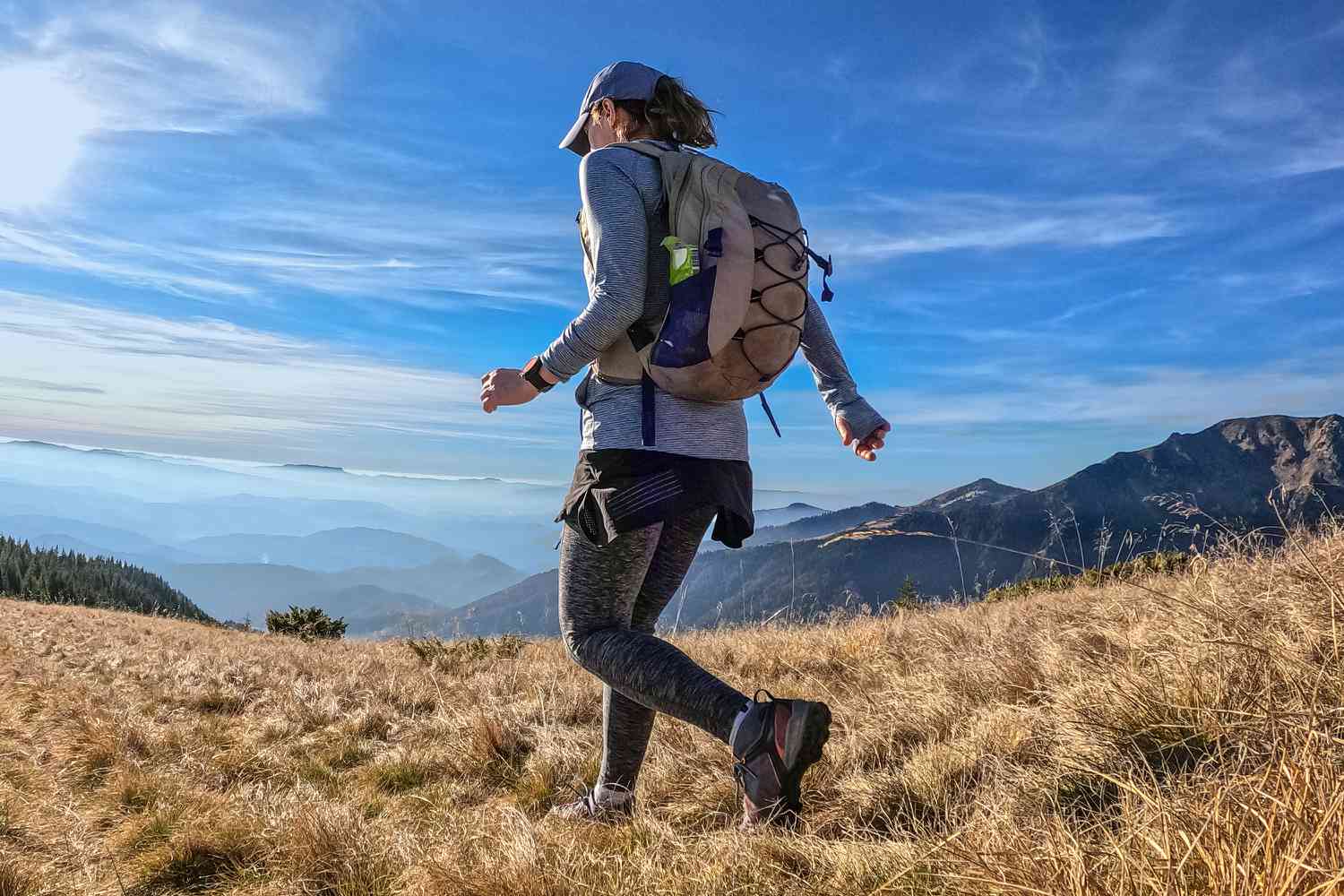A Beginner's Guide to Rucking: Everything You Need to Know

Rucking is a fitness trend that has gained popularity on TikTok and in real life. Although it's not a new concept, it's driven by its simplicity and effectiveness. Rucking refers to walking while carrying some additional weight on your back. As Tasia Percevez, an ambassador with rucking gear company GORUCK and a CrossFit competitor, says, the only thing you need to start rucking is a backpack. Whether you load it up with books or water bottles, it’s an accessible way to work out.
That’s not all; rucking is not only a great workout, but it also has long-term fitness benefits. Let's dive deep into what rucking means, how it can improve your fitness, and how to incorporate it into your exercise regimen.
You might be familiar with the concept of rucking, even if the term is new to you. Rucking is essentially walking with a weighted backpack. As NASM-certified personal trainer Tony Vacharasanee puts it, "we've all probably done some version of it in school." It doesn't require a backpack specifically - any object adding weight will do. If you've ever hiked with a weighted bag or carried your child on your shoulders, you've been rucking! And if you enjoy hiking, you'll find that it and rucking are pretty similar. As Vacharasanee points out, "Hiking is rucking in the wild, and urban hiking is rucking."
The origins of rucking predate military training exercises - we've been carrying things while walking for a long time. Physical therapist Jessica Olivarez, D.P.T., who initially started rucking in the army, reminds us that rucking has ancient roots. Nowadays she leads a community rucking group for adults.
Rucking goes beyond basic fitness and has several health benefits. It’s a low-impact way of getting a cardiovascular workout. The extra resistance strengthens your muscles and bones, including your calves, hamstrings, quads, core, upper back, shoulders, and even your feet. It’s also good for your balance. Plus, unless done on a treadmill, it will get you outside which is beneficial for mental health.
While rucking might not get your heart rate as high as running or boost your metabolism quite as much, it definitely beats regular walking by providing a cardiovascular challenge and can burn up more calories depending on the weight you carry. On top of that, it’s gentle on your joints, which allows you to do it daily with low risk of injury.
According to Olivarez, rucking is also practical - it can prepare you for everyday activities like carrying shopping bags or picking up your child. "I tell my patients it puts money in their strength bank so that when they're doing activities that require them to carry or move things, they're not short on cash," she adds.
Any backpack with wide straps can be used for rucking, but dedicated rucksacks typically come with features like a compartment for weight plates, additional cushioning for the lower back, waist or chest strap, and extra handles for strength-training exercises. Most include somewhere to store water, either a side pocket for a bottle or a slot for a hydration bladder.
Weighted vests are an alternative for rucking, but Vacharasanee warns they may restrict your breathing and are less versatile. He explains, "Unless you're wearing a bulletproof vest for work, the only thing you can use it for is exercise... Whereas a rucksack, it's a lot less conspicuous."
If you're looking to give rucking a go, start slow. Begin with a pack no heavier than three to five percent of your body weight, advises Olivarez. “With any new kind of activity, the best way to start is to start slow and progress based on how you're feeling,” she says.
One of the perks of rucking is that it actually inspires good posture. “It's extremely uncomfortable to have bad posture while rucking,” says Vacharasanee. Just focus on keeping the weight over your center of gravity, or midfoot, which means you’ll want a slight forward lean in your trunk without slouching.
Also, keep an eye on your stride. “You're pulling your leg forward with the hip muscle and then driving forward with the back leg. It's a deliberate stepping versus just kind of a lackadaisical walking,” says Olivarez.
Olivarez suggests trying to place the weight as high up in your backpack as possible. “Roll up some towels in the bottom or [use] a yoga block to get that weight to the top of the bag,” she says. This will make it easier to maintain good form while you walk.
If you’re not already a regular walker, Olivarez suggests starting with a weight equal to three percent of your body weight and heading out for 15 to 20 minutes or a mile a couple of times a week. Or, if you regularly walk three to five miles, you can start by adding five percent of your body weight for half the distance you’d normally walk, and see how your body responds. Regardless of your athletic background, don’t try to carry more than 10 pounds until you get used to the activity, warns Vacharasanee
“If you're really sore, then drop the weight down, go a little shorter on time, slow down a little, take seated rest breaks,” Olivarez suggests. “Skip a day or two to let your body return to its baseline, and then continue to progress again.”
As you get more comfortable, experiment with the variables: Add more weight (no more than five pounds per week, says Vacharasanee), more time, or pick up the pace. “If you have access to hills, you can walk up a hill at a fast pace and recover on the walk down,” says Percevez.
Intervals are another great way to spice up your workout. Percevez likes to challenge herself with intervals that alternate two minutes at a fast pace with one minute of recovery. Or, after every 10 minutes of walking, she’ll do 10 squats or lunges with the pack on.
Depending on your goals, Olivarez might recommend doing two shorter rucks each week of 45 to 60 minutes while carrying 15 to 20 percent of your body weight, then one longer ruck on the weekend of two to three hours with a lighter weight to build up your endurance. “Someone who's doing it for military training or ruck-centric fitness challenges like a big 24- to 48-hour rucking tour of a city, you have to train three to four times a week [and] add in weightlifting and some functional fitness,” she says.
Advanced ruckers that want to add some variation to their routine can also try rucking backward up a hill. Olivarez sometimes has her groups do this to work their hamstrings and quads in a new way. “Then I might have them wear their pack on the front for a little bit just to get the backside of the body a different challenge,” says Olivarez. “It's a very versatile piece of equipment — you're only limited in your imagination of what you can try.”
Before heading out, you’ll want to make sure you have water with you (fortunately, backpacks offer a convenient place to carry it!) and that you’ve fueled yourself with enough calories.
Be sure to wear closed-toe shoes to keep your feet secure — any comfortable sneaker or hiking boot will do, says Vacharasanee. If you’re out after dark, wear bright colors or lights. And if you have to walk on the shoulder of a road, go against the direction of traffic so you can see cars coming. “Just be super aware of your surroundings,” says Percevez.
No matter your age or fitness level, as long as you can safely walk, you can ruck. If you do it at least once or twice a week, Vacharasanee says, you’ll start to see stronger muscles throughout your body, plus greater cardio endurance.
And it doesn’t even have to take extra time out of your day. “You can literally put on weight while walking the dog, shopping for groceries, doing any activity while you would be on your feet anyway, and you'll get more benefit out of it with a fraction of the impact on your joints that you would get from running,” says Vacharasanee.
You can also turn it into a social activity. People of different fitness levels can easily ruck together by carrying different amounts of weight, points out Percevez, who admits that the community element is one thing she especially loves about rucking: “You can exercise in a way that you can talk to your friends at the same time.”




